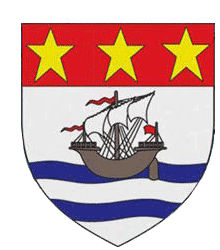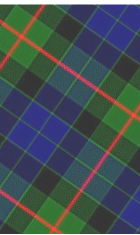| |
|
|
||
|
 What we know to be more reliable about the clan begins much later. "About the middle of the fifteenth century the chief of the clan was George, who lived in what the dismal jimmies of modern degeneracy have termed "barbaric romp" in his castle Halberry at Clyth. Actually he maintained the colorful culture of a Clan's chieftain's home."[3] From his office of Tusticiary or Crowner of Caithness he was known as Crowner Gunn, or by fellow clansmen and other Highlanders as “Am Braiteach Mor,” from the great silver brooch which fastened his plaid which he wore as the cognizance of his office of Crowner. What we know to be more reliable about the clan begins much later. "About the middle of the fifteenth century the chief of the clan was George, who lived in what the dismal jimmies of modern degeneracy have termed "barbaric romp" in his castle Halberry at Clyth. Actually he maintained the colorful culture of a Clan's chieftain's home."[3] From his office of Tusticiary or Crowner of Caithness he was known as Crowner Gunn, or by fellow clansmen and other Highlanders as “Am Braiteach Mor,” from the great silver brooch which fastened his plaid which he wore as the cognizance of his office of Crowner.
George was slain about 1464 in a deadly battle with the clan's archenemies, the Keiths, when the latter showed up to fight with two men per horse. Later (when exactly is unclear) Henry, a son of George Gunn and one of the few survivors of the battle that had claimed his father, killed George Keith of Ackergill and his son at Dirlot Castle (ID 8264) in Sutherland, where the unsuspecting Keith's had retired. Reportedly he was shot with an arrow through the heart from an open window as Henry exclaimed "The Gunn's compliments to Keith" (afterward used as a proverb in the north Highlands).[4]  The Crowner's eldest son, Hamish (James in English[5]), succeeded him as chief. He eventually abandoned the Caithness Estates and settled with a following of his clan, a little to the southwest into the Parish of Kildonan, in Sutherland,[6] where they were sometimes known as the Hamish Gunns. It is thought this move may have been because of the constant problems with the Keiths in Caithness, but some say was more likely that with the recreation of the new Earldom of Caithness it was found that the Gunns had no legal titles to their lands there. From then on, the main residence of the chiefs of this part of the clan, was at Killernan, in Kildonan. That dwelling was accidentally destroyed by fire and the manse abandoned about 1690.[7] Over time, the clan and it's line of Chiefs, lost the what was mostly a Norse culture, evolving into a more Celtic way of life, including the Gaelic language. Around the time these Gunns moved to Sutherland, Scotland started mandating the use of surnames. Many families where already using the prefix "Mac" when naming their sons of the same name. Some families now began to use that as a surname for all their children, instead. So, the children of Hamish were each given a "first" name and then all used "MacHamish" as a surname.[8] That being what happened when the children of the Gunn chief, named Hamish, where the surname MacHamish, which eventually became "Jameson" (son of James) when that was translated into English. This in turn, created the sept "Jameson" and is what makes this part of the Clan Gunn important to people everywhere with the Jam?son surname. Although physically in possession of lands in Caithness from about the twelfth or thirteenth century, no branch of the Gunns had any legal tenure of land until the middle of the seventeenth century, so presumably they held their possessions by the sword. Mixed up as they were with all the clan feuds in Caithness and Sutherland - at times at war with the Mackays as well as the Keiths - with the Sinclair's as well as the Sutherlands, the countless incidents in which they were involved have more character of romance than reality.[9] Not only that, but the Gunns lost their succession of chiefs in the latter 1700s, ending up somewhat rudderless, which along with the end of the clan system itself in 1746, effectively put the clan completely out of influence and importance altogether.[10] Lately however, interest and popularity of Scottish clans, including clan Gunn, have become popular with historians and sportsmen all over the world. Many Jam?sons today, believe they and their Jam?son family are descendants, or somehow otherwise connected with this clan. This is not likely, given the diversity and spontaneity of our various origins, not just in Scotland, but all of the British Isles. That is not to say that some Jam?son families could be descendants belonging with the Gunns and indeed, we are now finding that to be true with a few who have Y-DNA tested as matching with Gunns. So far, these have all been with families who are known to be in the Northeast part of Scotland near the Moray Firth. The history of this clan is rich in its descriptions of many of their chiefs, their life and their battles, all of which is documented well elsewhere. As this is not intended to be a history of the clan the interested reader is urged to separately seek out this documentation.
|
- please contact us regarding any broken links - or to suggest or submit further content.
Copyright 2015-2024. The Jameson Network.© All Rights Reserved. |